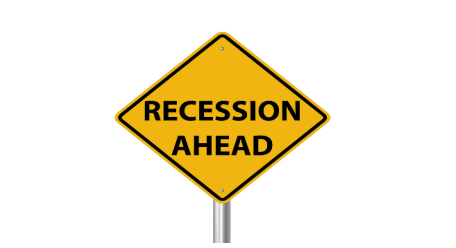• In their predictions for the coming year, economists have noted a recession, however opinions on its timing and severity differ.
• They do, however, concur that the recession will be brought on by the Federal Reserve’s interest rate policy, despite the fact that the central bank was responsible for averting the last two recessions.
• Recessions typically come on suddenly. CEOs almost never discuss recessions, according to Moody’s Analytics analyst Mark Zandi. It appears that CEOs are rushing to declare that a recession is about to begin. Everyone on TV mentions the recession. Recession, says every economist. It’s unlike anything I’ve ever seen.
Leading economists from around the world spent the most of 2022 persuading themselves that, if the world economy wasn’t already in a recession, it was about to enter one. However, the worldwide recession has been put off until 2023 as the year comes to an end.
Given how tight the labour market was in the US throughout the first half of last year, it is obvious that warnings of a recession were unfounded. And despite the certainty with which many once more predict the impending arrival of a downturn, the likelihood that one will occur this year is far less than 100%. However, due to the US Federal Reserve and other major central banks’ quick interest rate increases, there is roughly a 50% risk of a recession in 2023 and a 75% chance that it will occur at some time during the following two years.
Europe, which has been severely impacted by rising energy prices, is more likely to enter a recession, which is generally understood to occur when GDP declines for two consecutive quarters. But it appears that China is in even worse shape. Due to the Chinese government’s recent decision to reopen the economy without a strong enough vaccination drive, it faces the same issues as Europe as well as a failing real estate industry and an increase in Covid-19 cases.
Even though it is anticipated that China’s development will be significantly slower than the historical rate to which it has grown used over the previous four decades, it is doubtful that its GDP will decline for two quarters. After instance, during the height of the global financial crisis in 2008, a mere eight percentage point decline in China’s GDP growth was insufficient to result in a fall in the country’s domestic output. This is yet another illustration of the problems with using the norm of two consecutive quarters of negative GDP growth to define a recession.
There are indications that the “everything bubble” has finally burst, even though the anticipated negative repercussions of increasing interest rates have not yet materialized. US stock values reached their peak in January 2022 and have since been on the decline. Bonds, real estate, and assets from emerging markets have all experienced year-over-year declines.
Even if the next fall definitely shouldn’t be classified as a recession because the two consecutive quarters standard is too restrictive, next year will be a difficult year for the global economy. Rarely, if ever, did global growth in the years following World War II go below zero for more than one quarter. By that standard, the severe recessions brought on by oil shocks in 1974 and 1981 are not considered to be global recessions. With the two noteworthy exceptions of the 2008 global financial crisis and the 2020 Covid-19 crisis, emerging and developing countries typically experience positive growth even when there is an apparent recession. While the International Monetary Fund and Organization for Economic Cooperation and Development predict that global growth would decline to 2.2-2.7% in 2023 from 6.1% in 2021, but nevertheless makes it unlikely that the global economy will decline for several quarters in a row.




